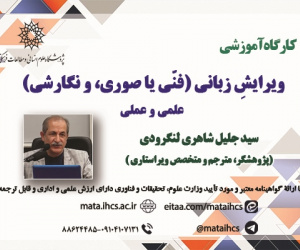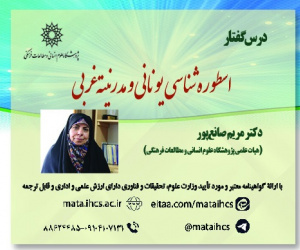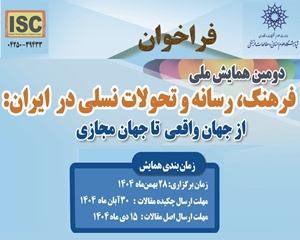جستاری در تحلیل گونه شناسی خانه های سنتی کرمانشاه در دوره قاجار؛ عوامل فرهنگی موثر بر رابطه جنسیت و فضا (مقاله علمی وزارت علوم)
درجه علمی: نشریه علمی (وزارت علوم)
آرشیو
چکیده
به دلیل تغییرات پیش آمده سبک زندگی در قرون گذشته، خانه های سنتی به طرز فاجعه آمیزی در معرض تخریب قرار دارند. باتوجه به اینکه بخش اعظم بناهای تاریخی را خانه های سنتی تشکیل می دهند می توان به اهمیت بررسی و توجه به این نوع بناها پی برد. بنابراین مسئله گونه بندی خانه های سنتی و دسته بندی الگوهای به کار رفته در آن ها، جهت شناخت و دسته بندی بناهای مشابه می تواند حائز اهمیت باشد؛ چراکه می توان همان الگوها را به گونه ای امروزی در بناهای جدید مورد استفاده قرار داد و در روند مانایی این کهن الگوها گامی اساسی برداشت. خانه جایی است که ساکنان آن احساس ناراحتی نکنند و اندرون خانه یا جایی که زن و بچه زندگی می کنند می بایست تنوع زیادی داشته باشد تا خستگی احساس نشود. ورود زنان و مردان به برخی از عرصه ها، به علت زنانه و مردانه تلقی شدن، محدود یا تشویق می شود؛ بنابراین، برخی اماکن به عنوان «عرصه های زنانه» و برخی دیگر «عرصه های مردانه» شناخته می شوند. در دوران مختلف تاریخ ایران، تعاریف و دیدگاه ها نسبت به زن و هویت جنسیتی زنان و مردان متفاوت بوده که پارادام های غالب اجتماعی، اقتصادی، فرهنگی و آیینی را می توان در تحولات این دیدگاه ها دخیل دانست. همچنین تفاوت دیدگاه ها موجب تغییر عرصه های جنسیتی، گسترش یا محدودیت آن ها شده است. در این پژوهش که از طریق روش تحلیلی و بررسی تاریخی بناها انجام شده است تلاش می شود به بررسی گونه های خانه های سنتی کرمانشاه و عوامل مؤثر بر جنسیت و فضا در خانه پرداخته شود. یافته های تحقیق بیانگر آن است که عوامل فرهنگی چون باورهای آیینی، نحوه پوشش و آموزش زنان، رابطه جنسیت و فضا را متغیر ساخته است.اهداف پژوهش:بررسی گونه های خانه های کرمانشاه و ارتباطات فضایی آن ها.بررسی تأثیر عوامل فرهنگی بر رابطه جنسیت و فضا.سؤالات پژوهش: آیا گونه های متفاوت خانه در کرمانشاه بر ارتباطات فضایی تأثیر دارد؟آیا عوامل فرهنگی بر ارتباط جنسیت و فضاها تأثیر دارد؟A Study on the Typology of Traditional Houses in Kermanshah during the Qajar Period: Cultural Factors Affecting the Relationship between Gender and Space
Traditional houses have faced catastrophic threats of destruction due to lifestyle changes over past centuries. Given that traditional houses constitute a significant portion of historical buildings, their study and preservation are of paramount importance. Consequently, the classification of traditional houses and the categorization of their architectural patterns are crucial for understanding and grouping similar structures. Such typologies can be adapted in contemporary architecture, thereby contributing fundamentally to the preservation and continuity of these archetypal forms. A house is a place where inhabitants should feel comfortable; the inner quarters—typically inhabited by women and children—must exhibit sufficient variety to prevent monotony and fatigue. Access to certain areas by men and women is often restricted or encouraged based on their gendered connotations; thus, some spaces are designated as “female domains” while others as “male domains.” Throughout various historical periods in Iran, definitions and perceptions of women and gender identity have evolved, shaped by prevailing social, economic, cultural, and ritual paradigms. These shifting perspectives have led to transformations in gendered spatial arrangements, either expanding or limiting them. This study employs analytical and historical methods to examine the typologies of traditional houses in Kermanshah and the cultural factors affecting the gender-space relationship within these homes. The findings reveal that cultural elements such as ritual beliefs, women’s dress codes, and educational practices have significantly influenced the dynamics between gender and spatial organization.Research Objectives:To examine the typologies of Kermanshah houses and their spatial relationships.To investigate the impact of cultural factors on the relationship between gender and space.Research Questions:Do different house typologies in Kermanshah affect spatial relationships?Do cultural factors influence the relationship between gender and spaces?







